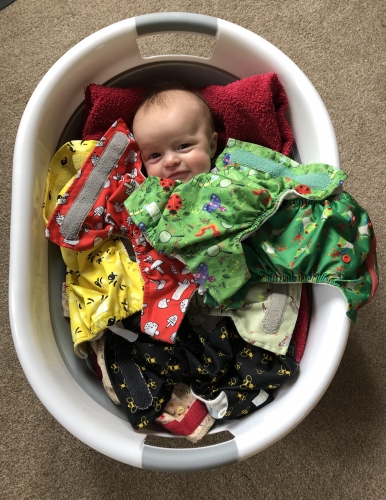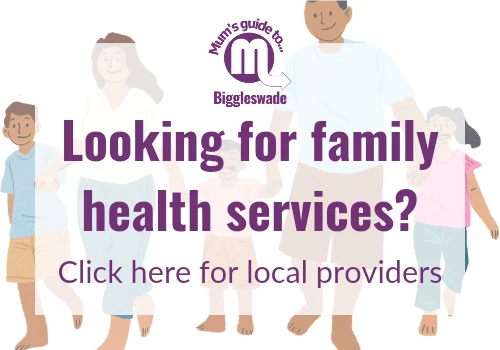There are so many ways of trying to reduce our waste, nappies is a great place to start.
I personally have used cloth nappies on two out of my three children, not 100% of the time but a huge portion of the time so I totally understand the benefits, pros and cons. There is a lot of information on how to start but I thought I would share the information that is on the Central Bedfordshire Website
Benefits of choosing real nappies
Real nappies can cost half the price of disposable nappies, saving up to £500 for your first baby. Reuse your cotton nappies for a second baby and save even more money! You can also claim £25 back when you spend £50.
The cheapest option, even taking into account the cost of washing powder, energy and depreciation of the washing machine, is buying your own real nappies and washing them at home.
Green Mums have produced a video demonstrating how easy real nappies are to use. See real parents talking about real nappies.
Read the local council leaflet for more information on real nappies.
The health benefits
Disposable nappies are made of super-absorbent chemicals, paper pulp, plastics and adhesives, while real nappies let your child's skin breathe in natural cotton.
If you want the best solution, organic cotton and hemp nappies are available at a reasonable cost.
Babies using washable nappies tend to potty train 6 months earlier than those in disposables.
Variety of styles to choose from
From prefolds to quick fastening velcro, there are a wide range of real nappy types to choose from, so you can select the best style for your baby and your individual circumstances.
Kinder to the environment
Disposable nappies create huge amounts of waste and can take up to 500 years to rot away in a landfill.
Real nappies create less waste and by following these simple tips you can help reduce their environmental impact even more:
use washable fleece liners, rather than disposable ones
use low temperature detergents
switch to reusable wipes and help reduce the amount of waste potentially sent to landfill
buy more nappies initially and wash full loads
look at the label and try washing at a lower temperature
air dry outside rather than tumble dry where possible
purchase electricity on a green tariff
Suppliers
There are many suppliers to choose from to purchase nappies nowadays but I do recommend using The Nappy Lady
You could also check out the Facebook groups, there are so many and all give great advice, It is also nice to talk to others who are using them.
Consider using a trial kit from Bedfordshire Nappy Library but enquire as soon as you can as there are often waiting lists, but this is a great way to trial a variety of nappies in a very inexpensive way. Full kit - These are available in newborn or birth to potty size and will include around 20 nappies, a nappy bucket, and a wet bag for use when you’re out and about, additional boosters for increased absorbency and both flushable and washable liners. A full kit can be hired at a fee of £10 for a 2 week period, with the option to extend the loan term by 2 weeks at a time. The fee for extending is £5 per additional fortnight and regardless of the loan term, there will be a fully refundable deposit of £60 required to cover loss or damage.
There are probably a few main questions spinning around in your head about switching to cloth nappies.
Will I be washing nappies constantly? NO, How often you wash depends on how many nappies you have and which types. Most parents using cloth only wash them every other day or even every 3 days! They can be tumble dried on a low heat setting or hung outside on the line or indoors on an airer. I wash mine roughly every three days and I have around 25/30 most of which I passed down from my toddler (saving even more money)
The initial outlay seems expensive, what makes cloth the cheaper option? Real nappies save you money. You can save up to £500 for your first baby if you home launder washable nappies from birth to potty training, whilst reusing your cloth nappies for a second baby can save even more money. There are many Facebook groups for selling second-hand nappies. Some people chose this route when starting out to keep costs down and to reduce their environmental impact. You may also be able to use these sites to recoup some of your initial outlay after potty training.
What am I supposed to do with all that poo? Pre weaning nappies can all be washed in the machine, the machine will clean them all but do make sure you pop your machine on a monthly empty hot wash to give it a good clean. Many people aren’t aware of this but babies and small children excrete many viruses in their faeces including hepatitis A, rotavirus, shigella, salmonellosis, amebiasis, live polio virus (from vaccines), and typhoid among others. Therefore solids should be tipped into the toilet and flushed away. Fleece and disposable liners make this far easier as the nappy can then be stored in a lidded bucket or zip bag until wash time which may potentially be far less than the two week time frame that disposables may potentially remain in your domestic waste bin. Do not flush any type of liner as even though the packet may suggest it is flushable it wont do the environment any good.
Won't my baby be wet or uncomfortable? All modern cloth nappies have either a built in stay-dry layer or the option to add a fleece (or other material) liner to keep babies' bottoms nice and dry. You can buy these or even make your own! Also changing your baby often will help with this.
I hope you find this helpful,
Leanne








 Browse the site
Browse the site_.png)







